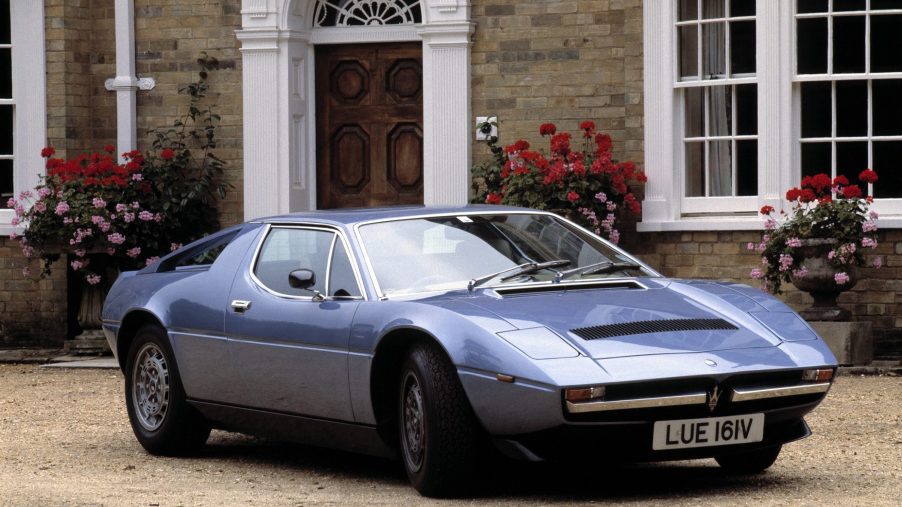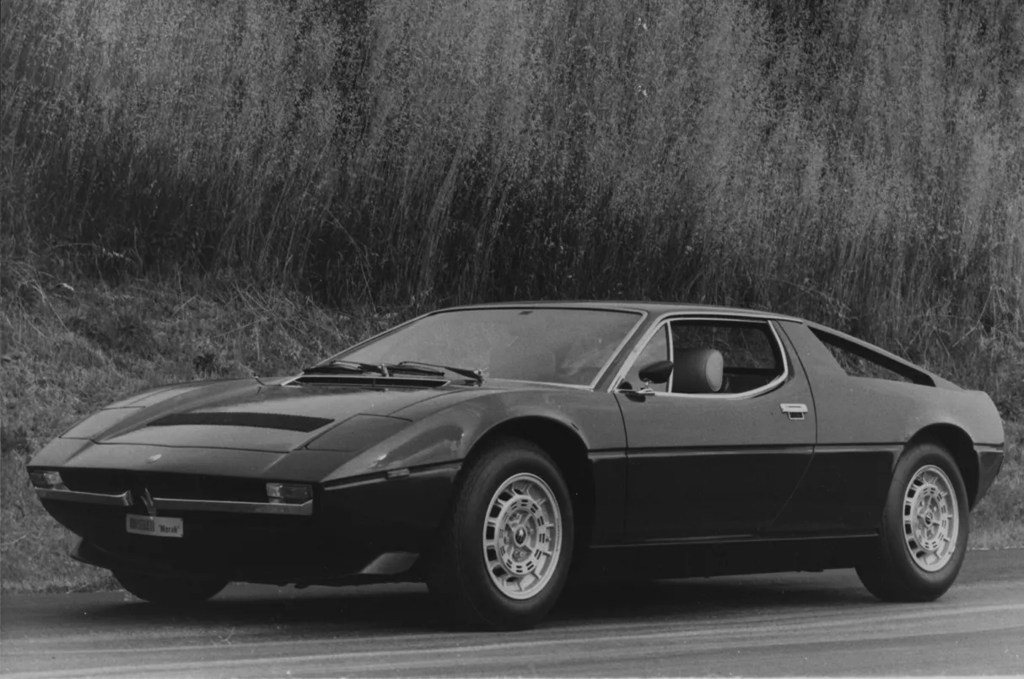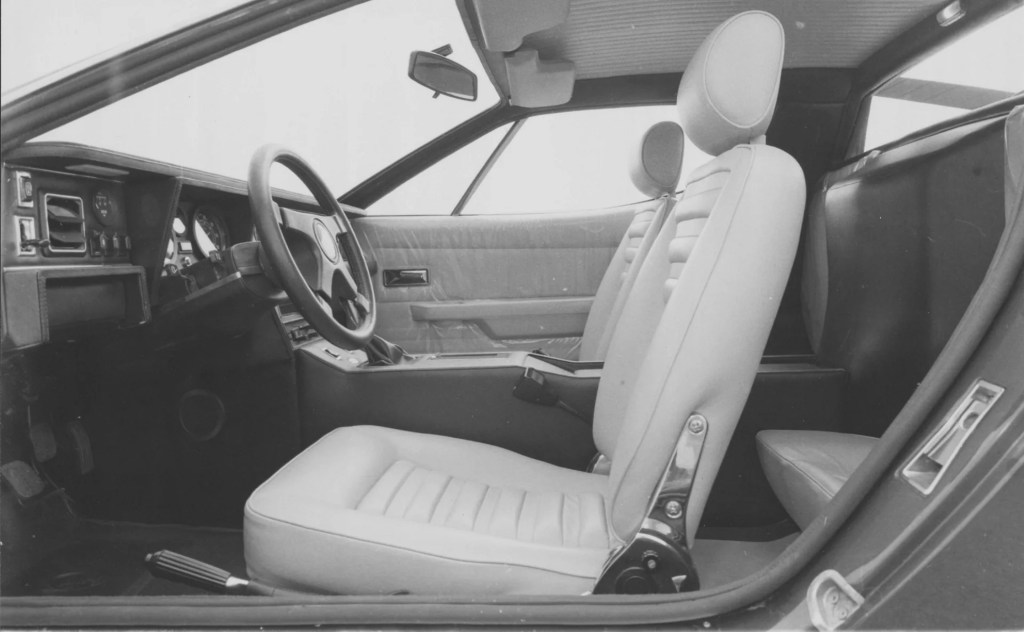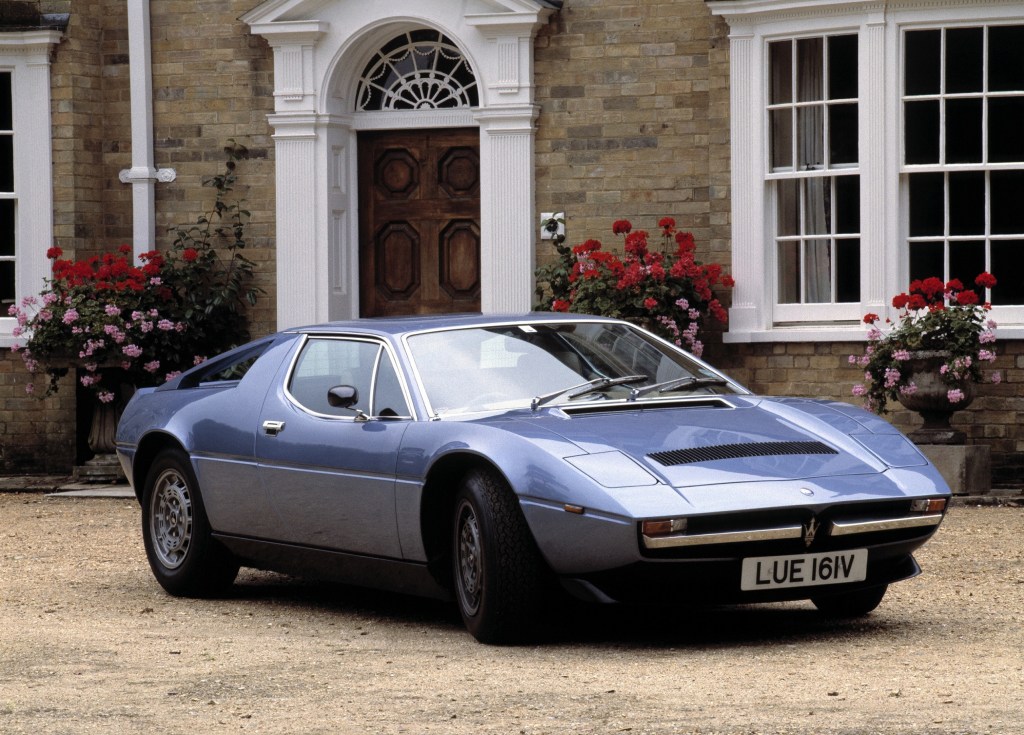
Maserati Merak: The MC20’s Ferrari-Fighting Supercar Ancestor
Maserati Merak article highlights:
- The 1972-1976 Merak was Maserati’s attempt at making an entry-level mid-engine sports car to take on the original Ferrari/Dino 206
- Maserati increased its sporting potential with the 1976-1982 Merak SS, which was lighter and more powerful
- Although it sold in relatively small numbers, the Merak remains a comfortable, fun, and stylish classic mid-engine supercar
Ferrari might’ve briefly controlled Maserati, but the two Italian brands have been rivals for longer than they were ever coworkers. And with their mutual relationship essentially dead, the Trident is once again free to goad the Prancing Horse. Its first salvo is the Maserati MC20, a mid-engine supercar with a trick twin-turbo V6. However, the MC20 isn’t the brand’s first mid-engine six-cylinder jab at Ferrari. Back in the 1970s, the Maserati Merak tried doing the exact same thing.
Before the MC20, the mid-engine Maserati Merak tried fighting Ferrari, Lamborghini, and Porsche with V6 power

Maserati Merak | Maserati 
Maserati Merak interior | Maserati
| 1972-1976 Maserati Merak | |
| Engine | 3.0-liter V6 with triple Weber carburetors |
| Horsepower | 187 hp (190 bhp) |
| Torque | 188 lb-ft |
| Transmission | Five-speed manual |
| Curb weight | 3045 lbs |
| 0-60 mph time | 10.2 seconds (MotorTrend) |
Although it debuted in 1972, the Maserati Merak story technically starts in 1968 with the Ferrari—er, Dino 206 GT. It wasn’t just the first mid-engine Ferrari road car, but also its most affordable road car. So, rather than being an unobtainable exotic, it was more like a high-end sports car—like a Porsche 911. The 1970s fuel crisis sapping supercar sales didn’t hurt, either.
Naturally, Ferrari’s Italian rivals decided to make their own mid-engine entry-level sports cars. For example, Lamborghini created the Urraco. And Maserati, which belonged to Citroen at the time, released a downsized version of its slow-selling V8 Bora: the Merak.
Although famed designer Giorgetto Giugiaro styled it, the Maserati Merak is arguably as French as it is Italian. For one, it has the same (albeit enlarged) V6 and five-speed transaxle as the contemporary Citroen SM. In addition, though it doesn’t have Citroen hydropneumatic suspension like the Bora, it does have a Citroen-sourced hydraulic clutch, brakes, and pop-up headlights, MT says. The SM also donated its steering wheel and some of its gauges to the Merak.
However, it’s worth noting that a Maserati engineer, Giulio Alfieri, designed the original version of the Merak’s V6. Also, the Merak has four-wheel disc brakes, fully-independent suspension, and a limited-slip differential. Furthermore, while it has the Bora’s chassis, the Merak’s smaller engine left room for rear seats. And that makes it the world’s first production mid-engine four-seat car, not the later Ferrari/Dino 308 GT4, MT notes.
Like the MC20, the Maserati Merak SS is a supercar that’s great in town and in the corners

| 1976-1982 Maserati Merak SS | |
| Engine | 3.0-liter V6 with triple Weber carburetors |
| Horsepower | 217 hp (220 bhp) |
| Torque | 188 lb-ft |
| Transmission | Five-speed manual |
| Curb weight | 2935 lbs |
| 0-60 mph time | 7.7 seconds |
Although the 308 GT4 didn’t beat the Maserati Merak to that record, it did beat the V6-powered sports car in a straight line. As a lighter, nimbler sports car than the Bora, the Merak was plenty quick and fun in the corners, MT says. But its Ferrari and Lamborghini rivals could out-gun it when the road stopped twisting. Ditto the contemporary 911.
In response, Maserati cut 110 pounds from the Merak’s curb weight, bumped up the compression ratio, and installed larger carburetors and different cylinder heads. It also got a new rear spoiler and an upgraded Bora-like interior with little to no Citroen nods, Hagerty reports. Though that last part might also be due to Citroen walking away from Maserati in 1976.
Regardless, the resulting Maserati Merak SS paired all the regular car’s enjoyable attributes with more speed. It has a comfortable, leather-upholstered interior, fun handling, great steering, and those wedge-tastic looks. Also, at least in the US, it swapped out the complicated Citroen hydraulics for servo-assist brakes and electric headlights. The clutch is still hydraulic, but then, so are modern ones.
So, while it’s not tremendously spacious, you could comfortably drive a Merak SS on modern roads. It even has a frunk. And while it’s not quite as fast as the 308 GT4, it significantly narrowed the gap.
How much does a Merak cost?
Unfortunately, Maserati released the Merak SS in the middle of a fuel and economic crisis. On the plus side, it lasted longer than the V8-powered Bora. Also, in a move BMW later mirrored with the 320is, Maserati also released a 2.0-liter version, the 159-bhp Merak 2000GT. But sales remained low. In the end, Maserati sold roughly 1830 Meraks; 787 of these are SS models.
Due to their rarity and upgrades, the SS models cost more than the base Meraks today. However, considering they’re classic mid-engine supercars, they’re not that expensive. A good-to-excellent condition Merak costs $40,000-$50,000 right now, Hagerty says. And a Merak SS in similar shape typically sells for $65,000-$80,000.
That’s not nothing, but there are plenty of air-cooled 911s and other Italian classics—not just Ferraris—that cost even more. Just make sure to find one that has an extensive service history. Also, be prepared for intensely regular timing chain checks.
Still, even though it wasn’t financially successful, the Merak did put up a worthy fight against Ferrari and Porsche. And from the sound of things, the Maserati MC20 is just as ready to throw down.
Follow more updates from MotorBiscuit on our Facebook page.


